
Manufacturing company Dover (NYSE:DOV) missed Wall Street’s revenue expectations in Q1 CY2025, with sales flat year on year at $1.87 billion. Its non-GAAP profit of $2.05 per share was 3.4% above analysts’ consensus estimates.
Is now the time to buy Dover? Find out by accessing our full research report, it’s free.
Dover (DOV) Q1 CY2025 Highlights:
- Revenue: $1.87 billion vs analyst estimates of $1.88 billion (flat year on year, 0.7% miss)
- Adjusted EPS: $2.05 vs analyst estimates of $1.98 (3.4% beat)
- Adjusted EBITDA: $448.1 million vs analyst estimates of $398.8 million (24% margin, 12.4% beat)
- Management lowered its full-year Adjusted EPS guidance to $9.30 at the midpoint, a 1.1% decrease
- Operating Margin: 15.9%, up from 13.5% in the same quarter last year
- Free Cash Flow Margin: 5.9%, similar to the same quarter last year
- Organic Revenue rose 1% year on year (-3.4% in the same quarter last year)
- Market Capitalization: $22.8 billion
Dover's President and Chief Executive Officer, Richard J. Tobin, said, "Dover's first quarter results were encouraging, with favorable book-to-bill across all five segments and growing momentum throughout the quarter providing support for our near-term outlook.
Company Overview
A company that manufactured critical equipment for the United States military during World War II, Dover (NYSE:DOV) manufactures engineered components and specialized equipment for numerous industries.
General Industrial Machinery
Automation that increases efficiency and connected equipment that collects analyzable data have been trending, creating new demand for general industrial machinery companies. Those who innovate and create digitized solutions can spur sales and speed up replacement cycles, but all general industrial machinery companies are still at the whim of economic cycles. Consumer spending and interest rates, for example, can greatly impact the industrial production that drives demand for these companies’ offerings.
Sales Growth
Reviewing a company’s long-term sales performance reveals insights into its quality. Any business can put up a good quarter or two, but many enduring ones grow for years. Unfortunately, Dover’s 1.8% annualized revenue growth over the last five years was sluggish. This fell short of our benchmarks and is a poor baseline for our analysis.
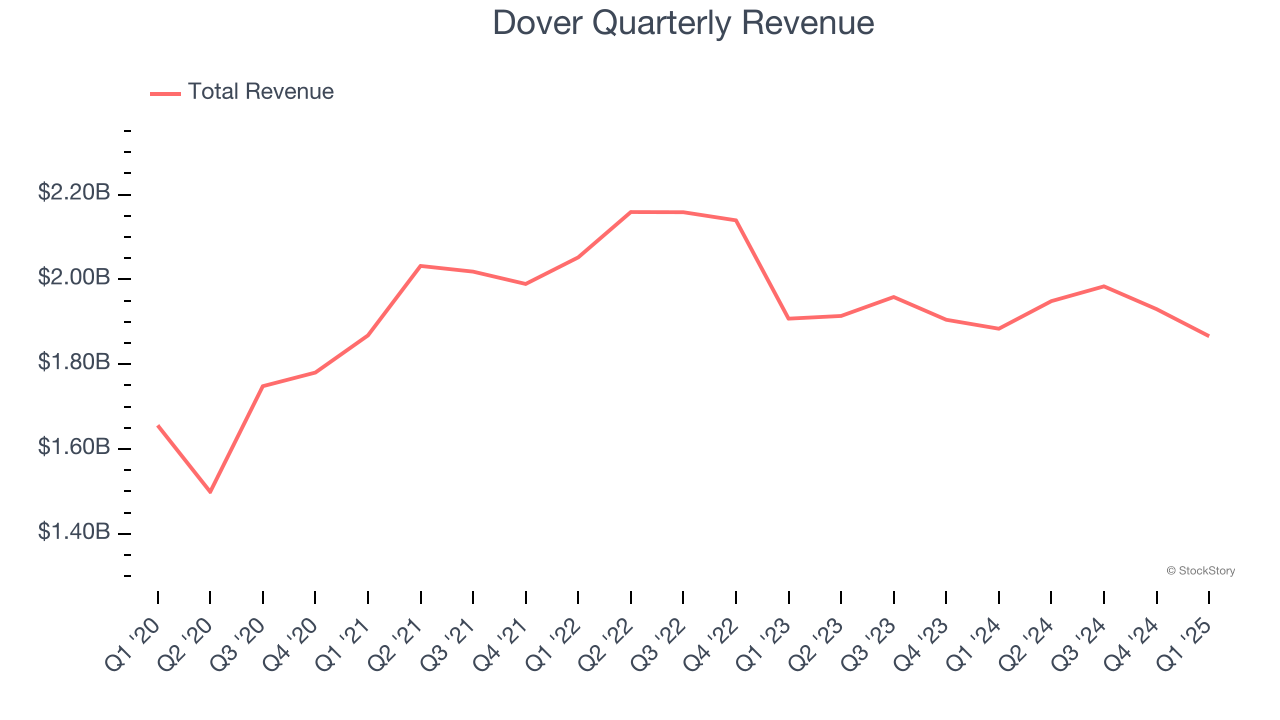
Long-term growth is the most important, but within industrials, a half-decade historical view may miss new industry trends or demand cycles. Dover’s performance shows it grew in the past but relinquished its gains over the last two years, as its revenue fell by 3.9% annually. Dover isn’t alone in its struggles as the General Industrial Machinery industry experienced a cyclical downturn, with many similar businesses observing lower sales at this time. 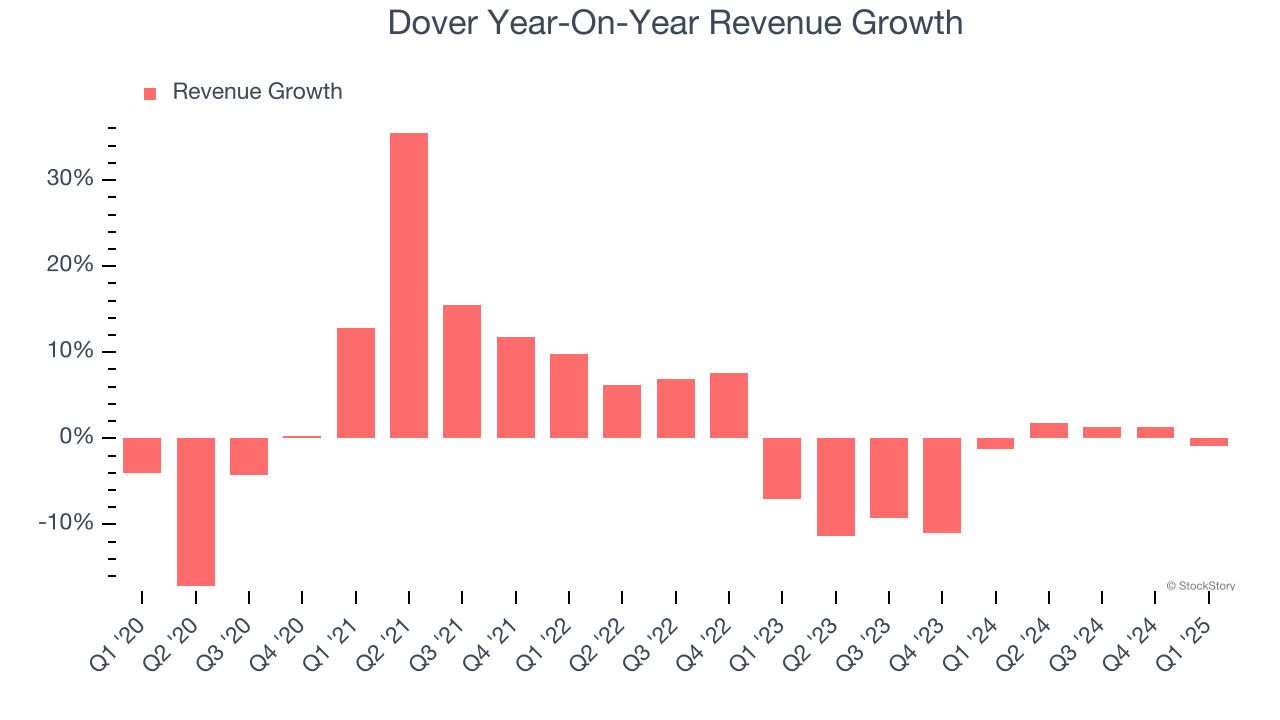
Dover also reports organic revenue, which strips out one-time events like acquisitions and currency fluctuations that don’t accurately reflect its fundamentals. Over the last two years, Dover’s organic revenue averaged 1.5% year-on-year declines. Because this number is better than its normal revenue growth, we can see that some mixture of divestitures and foreign exchange rates dampened its headline results. 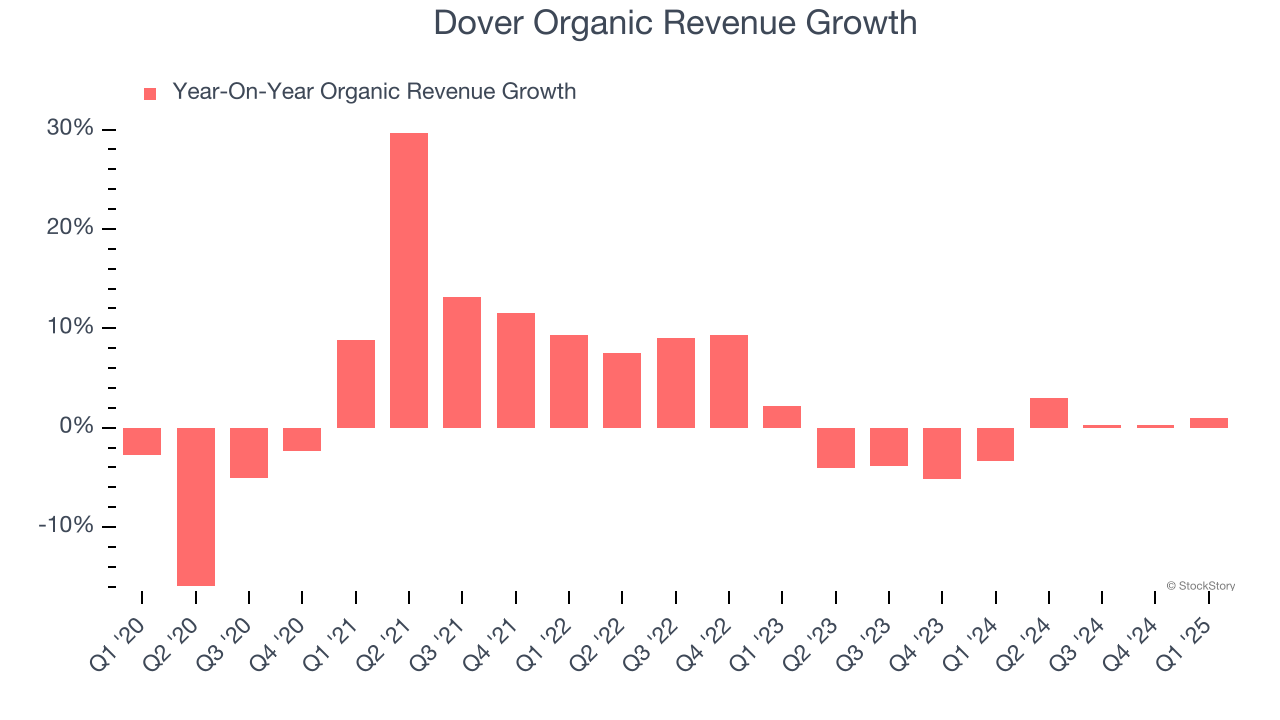
This quarter, Dover missed Wall Street’s estimates and reported a rather uninspiring 0.9% year-on-year revenue decline, generating $1.87 billion of revenue.
Looking ahead, sell-side analysts expect revenue to grow 4.5% over the next 12 months. Although this projection suggests its newer products and services will catalyze better top-line performance, it is still below the sector average.
Here at StockStory, we certainly understand the potential of thematic investing. Diverse winners from Microsoft (MSFT) to Alphabet (GOOG), Coca-Cola (KO) to Monster Beverage (MNST) could all have been identified as promising growth stories with a megatrend driving the growth. So, in that spirit, we’ve identified a relatively under-the-radar profitable growth stock benefiting from the rise of AI, available to you FREE via this link.
Operating Margin
Dover has been a well-oiled machine over the last five years. It demonstrated elite profitability for an industrials business, boasting an average operating margin of 15.7%. This result isn’t surprising as its high gross margin gives it a favorable starting point.
Analyzing the trend in its profitability, Dover’s operating margin rose by 1.4 percentage points over the last five years, as its sales growth gave it operating leverage.
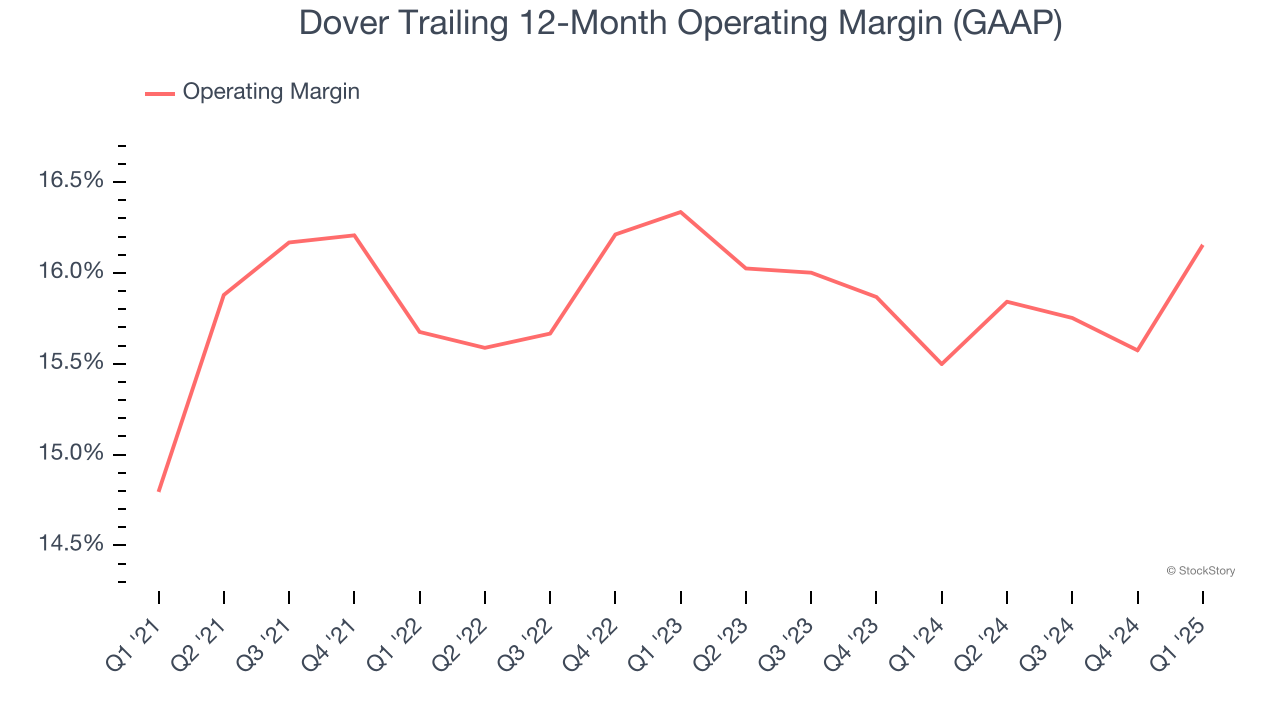
In Q1, Dover generated an operating profit margin of 15.9%, up 2.4 percentage points year on year. Since its gross margin expanded more than its operating margin, we can infer that leverage on its cost of sales was the primary driver behind the recently higher efficiency.
Earnings Per Share
Revenue trends explain a company’s historical growth, but the long-term change in earnings per share (EPS) points to the profitability of that growth – for example, a company could inflate its sales through excessive spending on advertising and promotions.
Dover’s EPS grew at an unimpressive 7.2% compounded annual growth rate over the last five years. On the bright side, this performance was better than its 1.8% annualized revenue growth and tells us the company became more profitable on a per-share basis as it expanded.
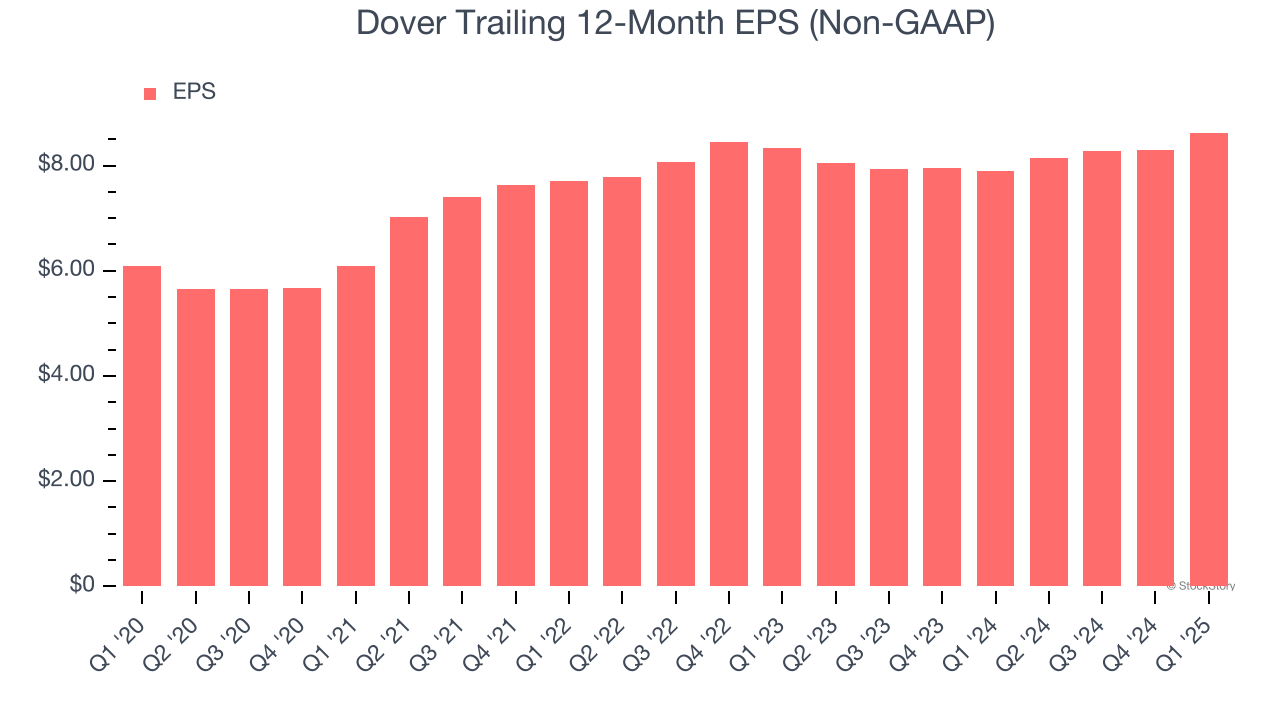
Diving into the nuances of Dover’s earnings can give us a better understanding of its performance. As we mentioned earlier, Dover’s operating margin expanded by 1.4 percentage points over the last five years. On top of that, its share count shrank by 5.2%. These are positive signs for shareholders because improving profitability and share buybacks turbocharge EPS growth relative to revenue growth. 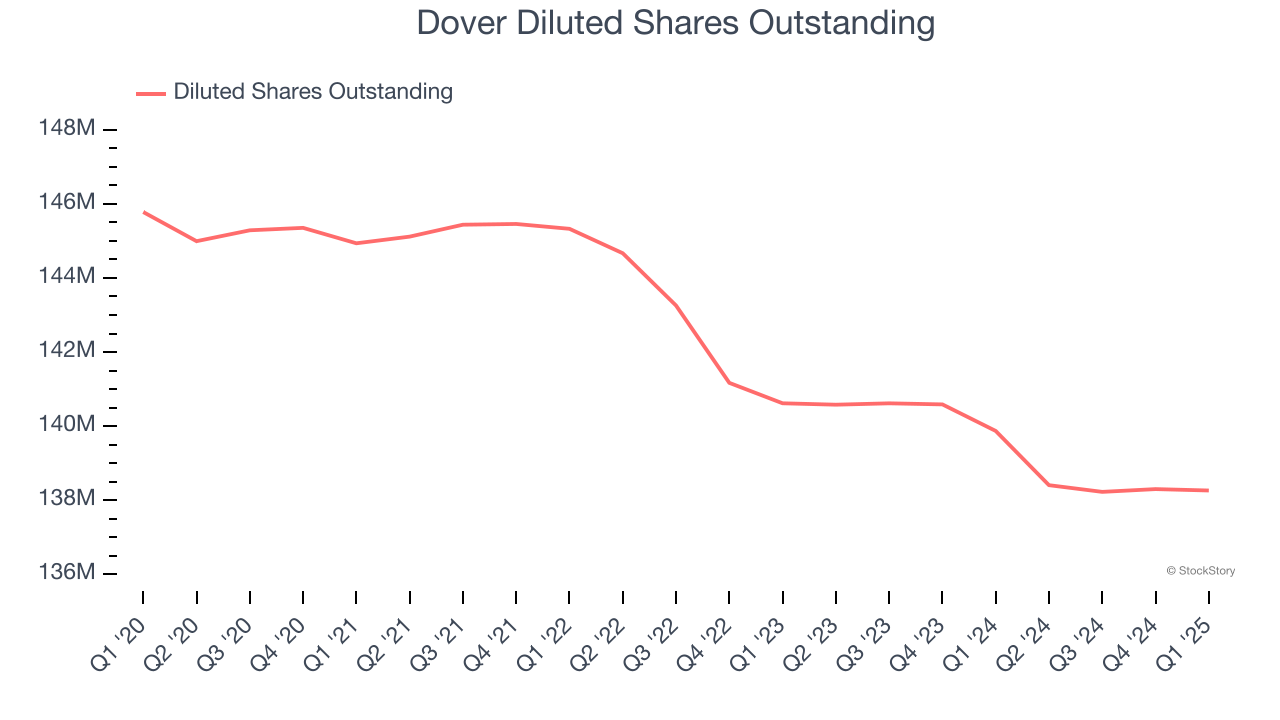
Like with revenue, we analyze EPS over a more recent period because it can provide insight into an emerging theme or development for the business.
For Dover, its two-year annual EPS growth of 1.8% was lower than its five-year trend. We hope its growth can accelerate in the future.
In Q1, Dover reported EPS at $2.05, up from $1.72 in the same quarter last year. This print beat analysts’ estimates by 3.4%. Over the next 12 months, Wall Street expects Dover’s full-year EPS of $8.63 to grow 10.2%.
Key Takeaways from Dover’s Q1 Results
We liked how Dover's EPS outperformed Wall Street’s estimates. On the other hand, its revenue slightly missed and its organic revenue was in line with Wall Street’s estimates. The company also lowered its full-year EPS guidance, which is never a good sign. Overall, this quarter could have been better, and the stock traded down 3% to $161.36 immediately after reporting.
Big picture, is Dover a buy here and now? What happened in the latest quarter matters, but not as much as longer-term business quality and valuation, when deciding whether to invest in this stock. We cover that in our actionable full research report which you can read here, it’s free.
